Roxane Jessi is a world traveler who spent the last few years participating in Burning Man Regional Events around the globe — from Blazing Swan and Burning Japan to Fuego Austral and Midburn. In 2023 Burning Man Publishing released her new book, Once Upon a Time in the Dust, Burning Man Around the World, which chronicles her adventures. This is the first in Roxane’s Journal series sharing sights, sounds and connections from the wildly inventive global Burning Man community. Curious to learn more? Hear Roxane speak about her adventures on the Burning Man Live podcast.
Every year the Black Rock City Honoraria program supports artists in creating art for the annual Burning Man event in Black Rock City, one of the most awe-inspiring art experiences in the world. But beyond the Nevada playa, many established Regional events, regardless of size, offer art grants to participants.
Through these grants, event organizers in the Burning Man Regional Network do something that is missing in our default world, unleashing a creative flow that breathes cities of art to life. It allows incredible feats of architecture to be undertaken yearly by artists in some of the most unforgiving environments on earth.
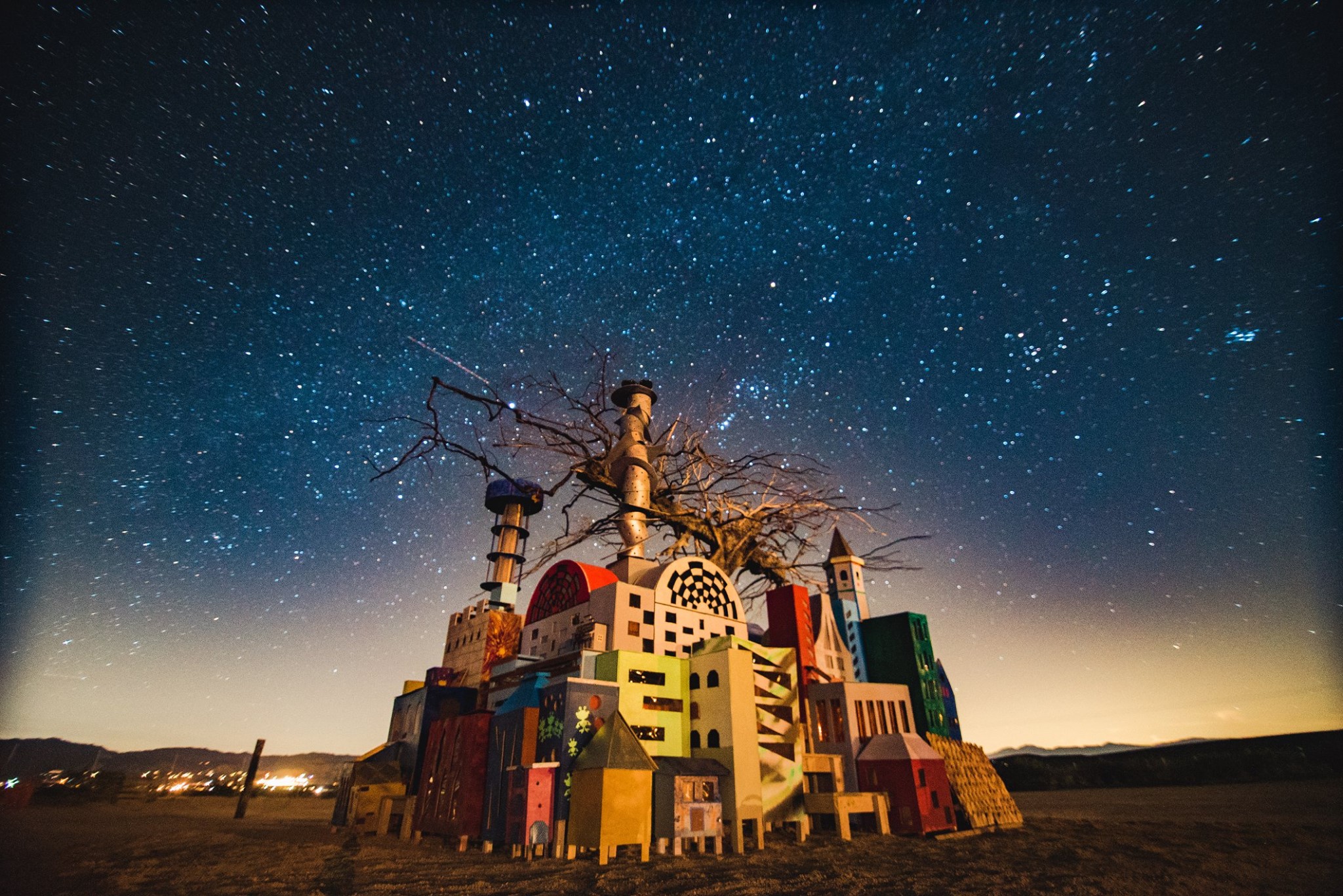
With the announcment of the 2023 Black Rock City Honoraria, we reflect on the art gifted to us each year by so many talented co-creators around the world — from towering pieces celebrating our diversity or taking a social stand, to the small gifts we give each other, which are artworks in themselves — and how the experience of creation indelibly changes the lives of the artists, as well as those who engage with it.
Last year, I was one of the many hopefuls applying for a Black Rock City Honorarium art grant. Attending more than a dozen burns, reporting on Burning Man culture globally, and building smaller-scale art at the 2019 BRC event had inspired me to create something bigger, more impactful. Following Black Rock City’s — and the wider world’s — three-year hiatus, I felt a calling to do just that. Trying my hand at creating larger-scale art seemed like a logical next step, and I was about to find out what a crazy rollercoaster ride it was.
With countless pieces of participatory art, Black Rock City is an undeniable art mecca. The sheer number of installations makes it impossible to see everything. This encourages artists to create ever larger and more imposing pieces, reaching for the sky and vying for attention like skyscrapers in Manhattan. Art on such a scale requires equally large-scale collaboration, with whole armies of artists coming together to conceptualize, fundraise, build and tear down what they have created. This in turn fosters community.
But art takes many forms. It is in the towering pyramids and spiraling temples that make us crane our necks up to look at them in awe, but equally in the smaller-scale pieces we find tucked away in a side street, or performance art. It is in the gifts we give each other, without expecting anything in return. Art offers a view into how others see the world, and sometimes a chill of recognition which speaks to a deep and secret part of us. The more interactive it is, the more it sparks playfulness and joy, and the more deeply it offers outlets for healing. As we build, we lose ourselves to a higher flow. This is felt all the more strongly when we know the worlds we are building will only live in a space in time before being dismantled or ceremoniously burnt to the ground.
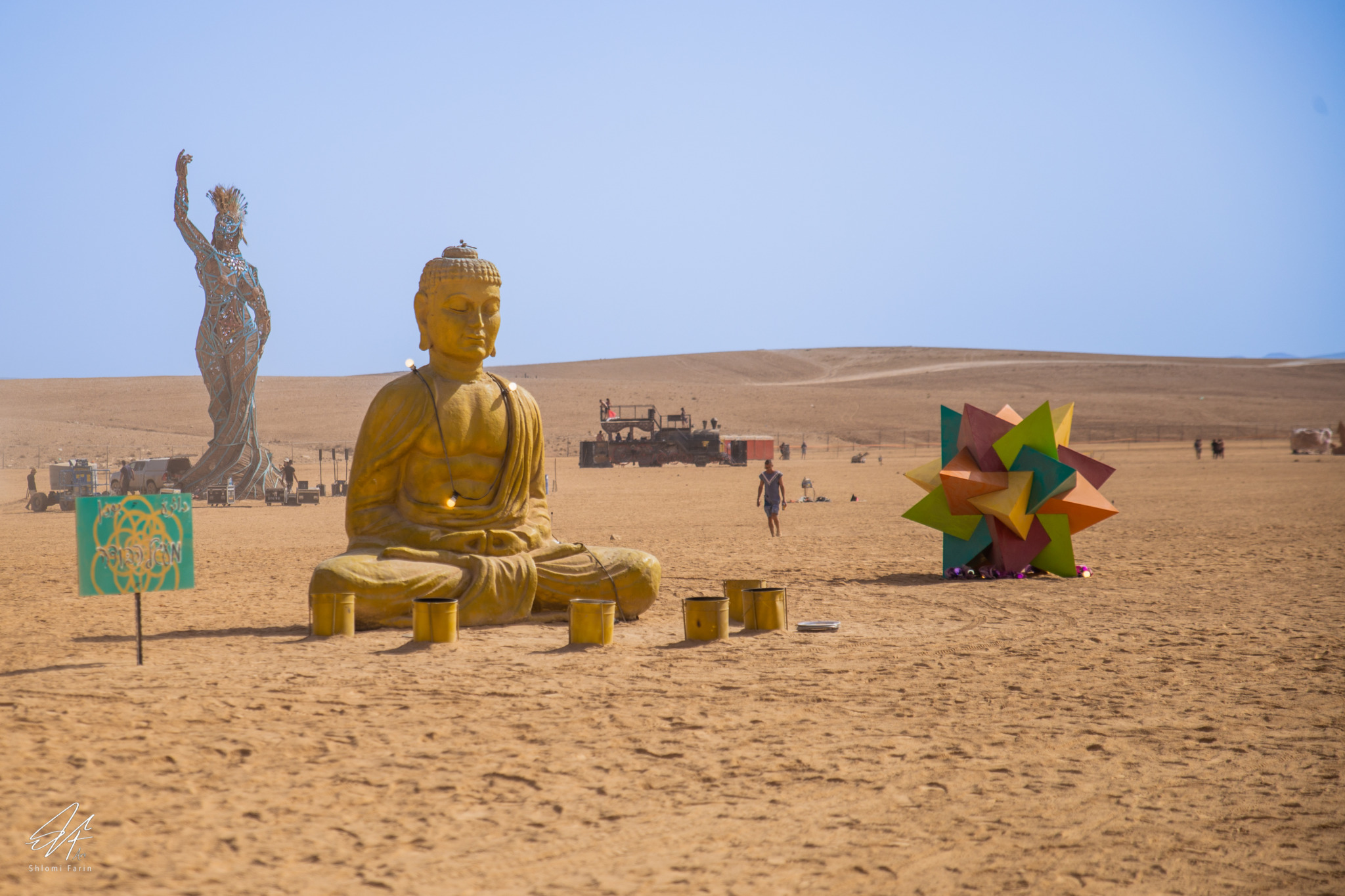
After experiencing so much creation this call grew progressively louder in my ears. And so, I woke up to an idea in late 2021 that kept me up all night. Every year I take a moment for introspection in remembrance of someone I have lost. I reflect on how far I have come, and the route still ahead. After so much social isolation and global loss, it seemed important to take a stand and rebuild the collective healing spaces that had been dismantled.
In my mind’s eye, I saw a spiraling stairway, a metaphysical space for catharsis and reflection where participants could collectively dream up a future. We had all been affected in some way by the COVID-19 pandemic, whether through losing loved ones, our livelihoods, or — less tangibly — our sense of togetherness. The piece invited us to reflect on moments of intense societal change as we re-entered social spaces and reconnected.
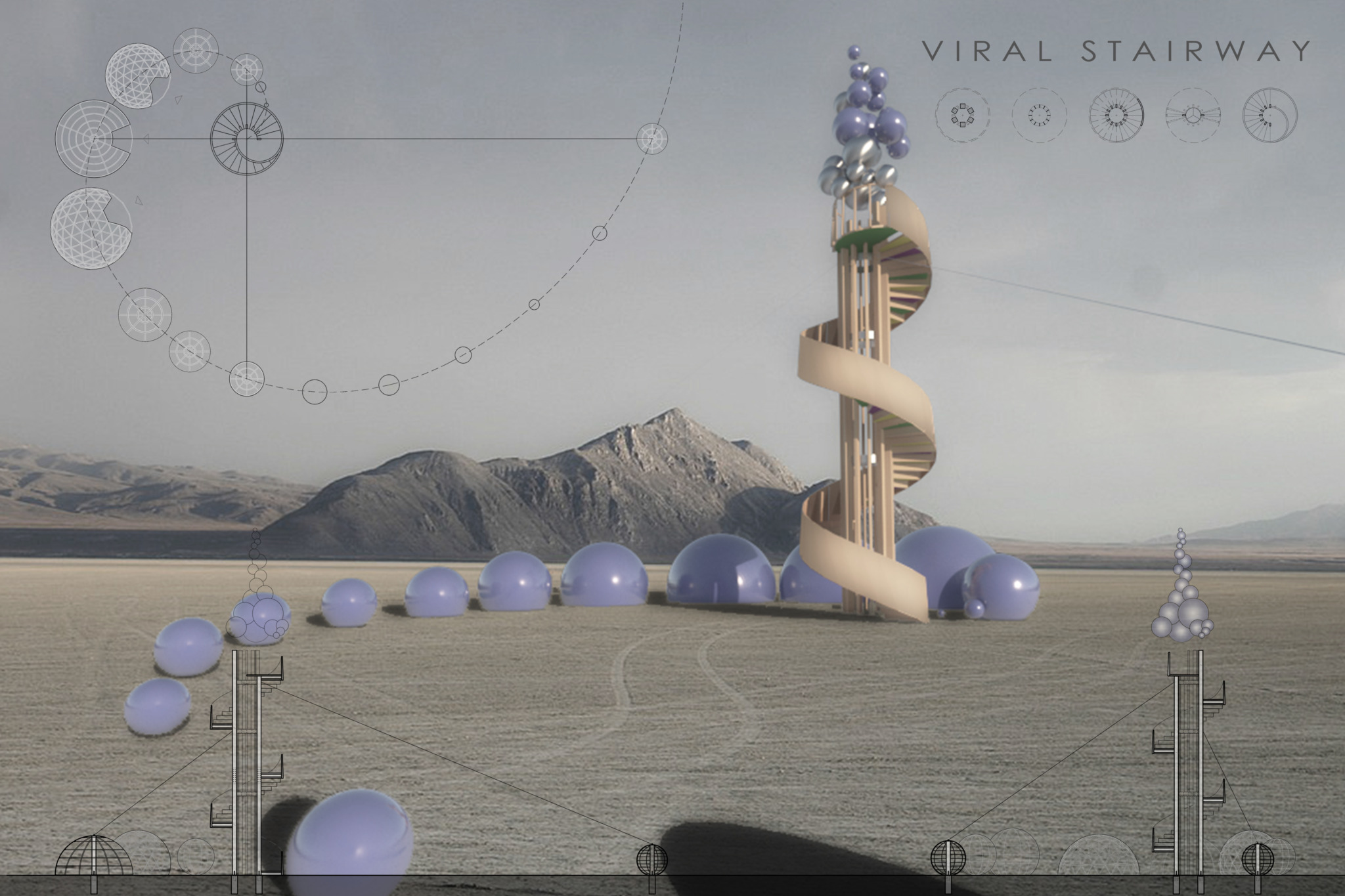
Inspiration tends to be sourced directly from our subconscious. In an uncanny coincidence weeks later I was struck to recall that a vision of the stairway had appeared in a recurring dream during the early days of isolation. Sometimes our dreams call us to action, opening doors through which our souls can reawaken.
Wide-eyed, I scanned the Burning Man Project website and realized I had just under two weeks to submit the first stage of the Black Rock City Honoraria art grant application. In those weeks, I took the seeds of an idea and sketched it into being. With no artistic or building background I had to be resourceful. Our human networks are such that when we employ a little Radical Self-reliance we usually find the help we need. I reached out to architects in my wider circle and shared the concept. When a cause ignites you, words and emotions seem to come to the surface like a rallying cry. From this place magic happens, and collaborations are born.
The Letter of Intent is the first step of an art grant application. There is no prescribed theme or format for the art that can be submitted, it just needs to align with Burning Man’s mission of art as an “interactive, participatory, shared experience of creative expression.” The process is competitive and a steep learning curve for an artistic newbie, but it is equal parts thrilling.
Creating cities, however whimsical and temporary, comes with hard work. Teams of exceptionally talented people come together each year and dedicate considerable time, resources, and energy to build incredible feats of architecture for no monetary return.
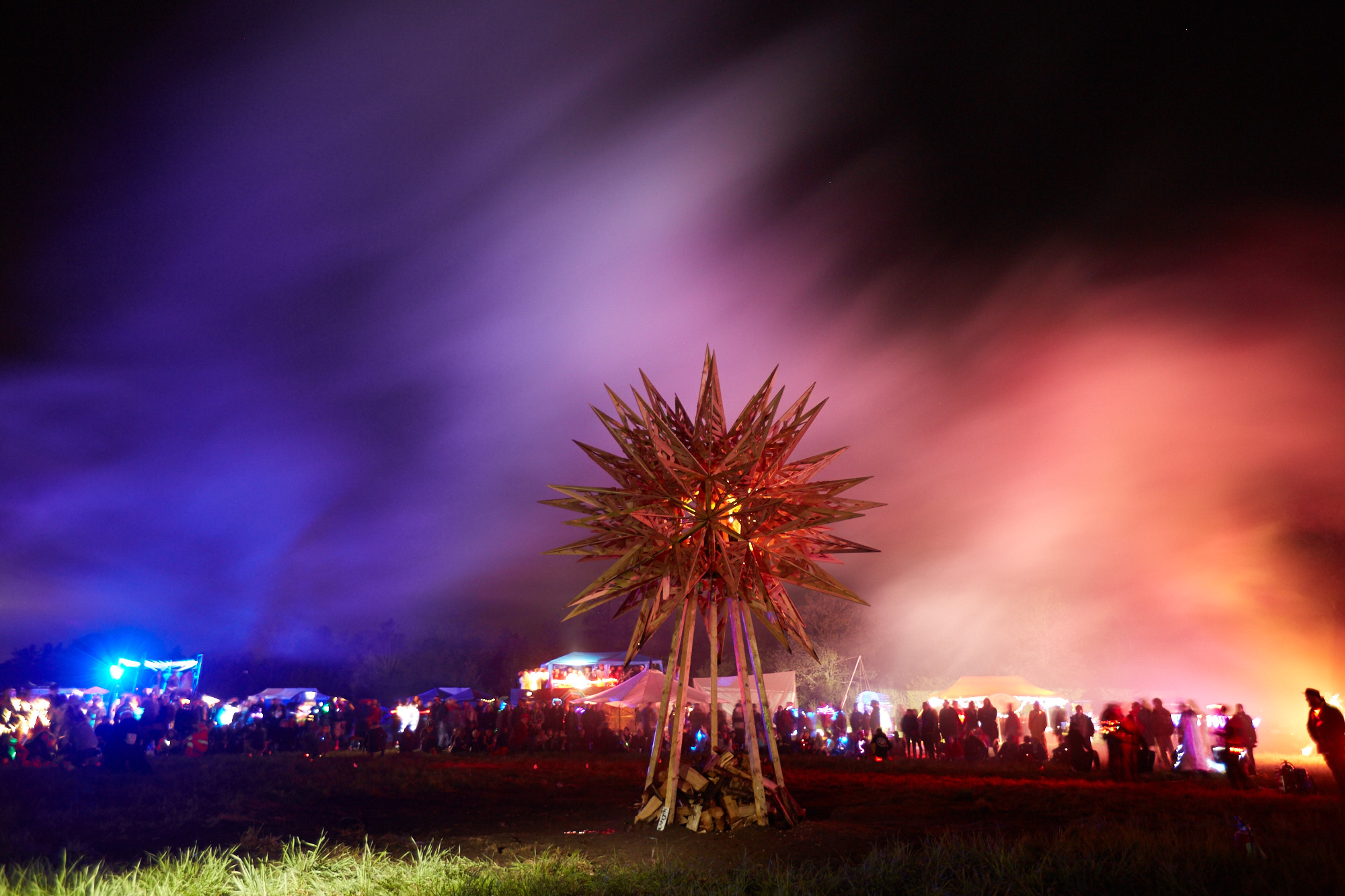
After successfully making it through the Letter of Intent stage, I got to work developing the art proposal. I found myself faced with a plethora of puzzles, such as how to secure structures against punishing desert winds without digging deep in the playa floor. Black Rock City is an architectural Rubik’s Cube. While Burning Man Project’s Art Department provides some guidance to artists, it very much expects you to be Radically Self-reliant.
Behind the scenes, artists face monumental logistical challenges to bring structures out to the desert. There are multiple hurdles along the way when pre-building off site; transportation, assembly out in Black Rock City, making sure structures are safe, and Leaving No Trace. Thinking through each of these steps myself gave me a whole new appreciation for the level of effort and the epic collaborations involved.
After reviewing submitted Black Rock City Honoraria applications, Burning Man Project issues approximately 70 grants to fund playa art, and one grant to support the team that designs and builds Black Rock City’s Temple. 2022 was especially competitive because many of the 2020 Honoraria artists brought their projects in 2022, limiting new proposals, and ultimately my own project was not successful.
As I later witnessed, awe-struck out on the Black Rock City playa, 2022 was an exceptional year for art. Some artists had worked on their pieces for three years, facing monumental hurdles during build given the spiraling cost of materials. There was a clear evolution towards environmental sustainability, and a shift to powering art by solar energy, including the Man and most of the Temple. A number of artists, such as the creators of “Catharsis,” Arthur Mamou-Mani and the Catharsis Crew and “Paradisium” by Dave Keane & The Folly Builders (the latter built out of reclaimed lumber) decided not to burn their art.
Black Rock City provides an important platform for its co-creators to call for social change, and the art on show invariably has a social mission. “Black! Asé” by Erin Douglas and Black Burner Project proudly displayed large-scale portraits of Black Burners to mark their place in histories (past present and future). “Consumption” by Tom Boughner and the Desert Propaganda Collective was a tall sculpture in the shape of a dollar sign assembled from discarded household appliances, highlighting the unsustainability of our modern societies. And of course, the unforgettable “Facing the Fearbeast,” by Tigre Mashaal-Lively, which moved so many with its powerful message to face our fears.
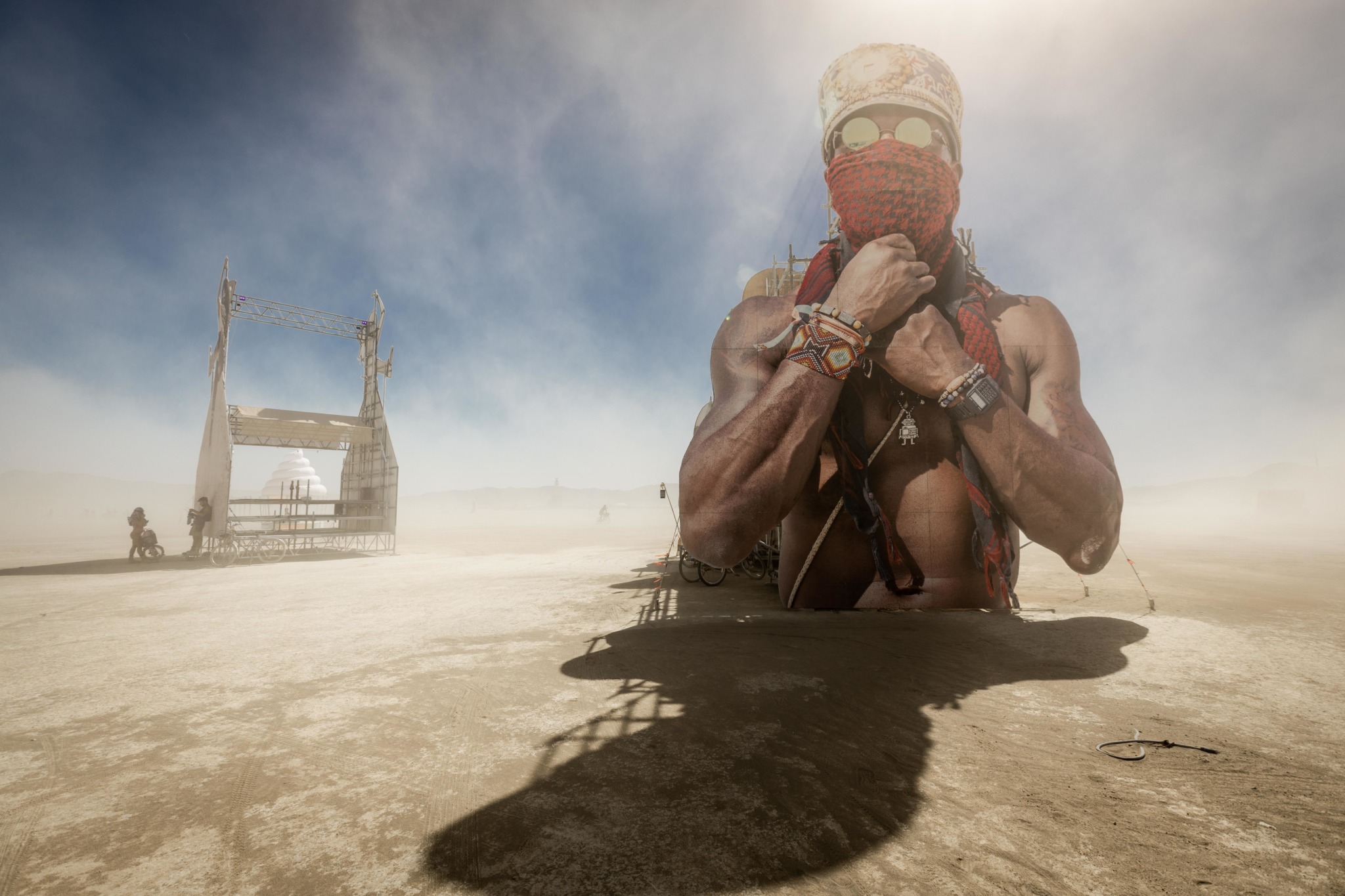
We can only imagine the kaleidoscope of art that will grace the global playas in 2023. What is clear is that the process of creation will touch the artists’ lives in unforgettable ways, and indelibly touch those who experience it.
Regardless of the outcome of my own art adventure, I believe the best stories are written outside of our comfort zones. I embarked on this ride with no artistic experience, and in two months was launched into a crash course, reconnecting with the community that had inspired me. Too often we think of art as the end result, but art is a journey in itself — usually far from linear. Perhaps this was just a stepping stone for a future project.
Our default world champions conformity and consumerism and actively discourages us from pursuing our creative talents. But Burning Man culture lets us reconnect to the artist within. Art — in all its forms — is the thread that unites the global movement. The playas of the world are every shade of their citizens, joined in a Communal Effort to build cities out of dust. In the words of Burning Man founder Larry Harvey: “People come for the art, they stay for the community.”
Cover image: “Paradisium” by Dave Keane & The Folly Builders, 2022 (Photo by Jane Hu)

